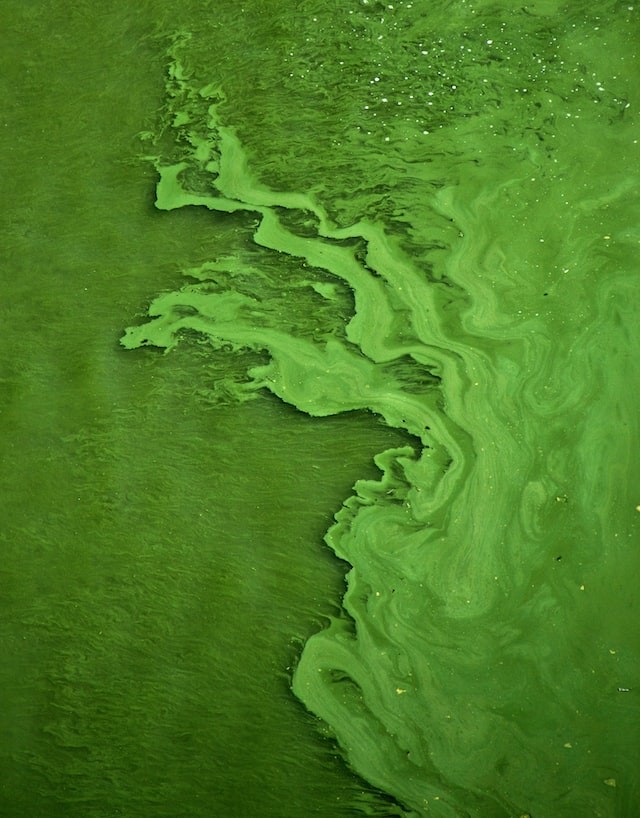When you think about algae, you might imagine vivid green strands swaying in a stream or blue-green blooms invading lakes.
However, the vast majority of these complex aquatic creatures that exchange sunlight for energy are brown in hue, such as the vast forests of seaweeds seen in arctic areas or along California's coast.
The evolutionary origins of brown-colored algae
 (Photo : Mihály Köles/Unsplash)
(Photo : Mihály Köles/Unsplash)

Brown algae are brown (and hence less attractive) because they have evolved a unique collection of pigments that absorb more light for photosynthesis than green plants and algae, as per ScienceDaily.
As a result, brown algae are critical to life on Earth, generating 20% of the oxygen humans breath.
Scientists have yet to unravel the molecular pathways that enable these brown algae to turn sunlight into energy.
Colorado State University biologists, in collaboration with researchers from Germany and China, have revealed ground-breaking new insights into the evolutionary pathways these algae underwent to produce their unusual brown pigments known as fucoxanthin.
Fucoxanthin is used in nutraceuticals and pharmaceuticals.
Fucoxanthin has gained popularity in nutraceutical and medicinal uses during the last decade.
The molecular structure of fucoxanthin was discovered in the 1960s after it was first reported in scholarly literature 150 years ago.
What was unknown was how the algae produced this natural substance.
This biochemical manufacturing route proved to be complicated; the researchers demonstrated in PNAS that the brown pigment fucoxanthin developed through duplication of ancient genes that produce photoprotective pigments.
Some of these gene copies evolved increasingly sophisticated roles along the route, allowing the manufacture of additional pigments that became particularly well-suited for photosynthesis.
"These algae are able to mix and match, then reprogram their cellular machinery for collecting light in ways that terrestrial plants have not," Peers explained.
The new discovery provides a rich framework for future research that might allow the brown pigment's extraordinary light-harvesting efficiency to be transferred to other creatures or purposes.
For example, understanding how brown algae originated might help scientists better understand the fucoxanthin pigment as a nutraceutical for a variety of health purposes.
In biofuels research, learning how to change the quantity of this pigment in a cell might lead to greater photosynthetic efficiency, allowing for the production of bigger amounts of biofuels with the same amount of light, land, and labor as traditional fuels.
Also Read: Algenol's Algae-Based Biofuel: The Next Generation in Renewable Energy (VIDEOS)
Biofuel Production Using Algae
Carbohydrates, proteins, and lipids/natural oils are the three primary components of algal biomass.
Because the majority of the natural oil produced by microalgae is tricylglycerol, which is the correct type of oil for manufacturing biodiesel, microalgae are the exclusive emphasis in the algae-to-biodiesel arena.
Microalgae may be utilized to create energy in a variety of ways other than biodiesel.
Under particular growing circumstances, several algae species may create hydrogen gas, as per Farm Energy.
Algae biomass may also be burned like wood or anaerobically digested to produce methane biogas, which can be used to generate heat and power.
Pyrolysis may also be used to produce crude bio-oil from algae biomass.
The majority of microalgae are exclusively photosynthetic, which means they require light and carbon dioxide as energy and carbon sources.
This culture mode is commonly referred to as photoautotrophic.
Some algae species, on the other hand, can thrive in complete darkness and use organic carbons such as glucose or acetate as energy and carbon sources.
This type of cultivation is known as heterotrophic.
Heterotrophic algal culture is difficult to justify for biodiesel production due to high capital and operating expenses.
Algal biofuel production often relies on photoautotrophic growth, which uses sunshine as a free source of light to reduce expenses.
Related article: Giant Clams Help Algae Partners Harvest Light
© 2024 NatureWorldNews.com All rights reserved. Do not reproduce without permission.



![Roundworms with Short Memories 'Stop Forgetting' When Frozen or Given Lithium [Study]](https://1471793142.rsc.cdn77.org/data/thumbs/full/70295/280/157/50/40/roundworms-with-short-memories-stop-forgetting-when-frozen-or-given-lithium-study.jpg)

